See below for a five-year trend of our global gender and U.S. race and ethnicity data as of December 31, 2024.
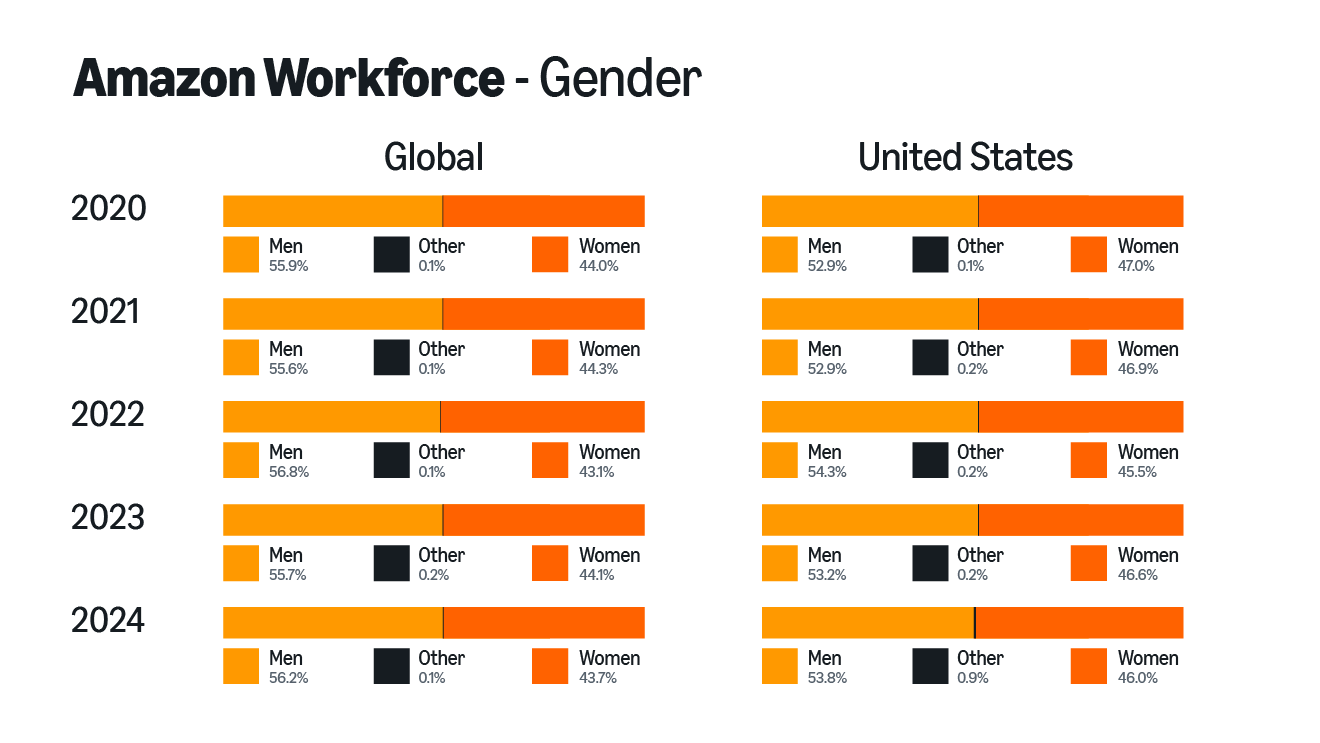
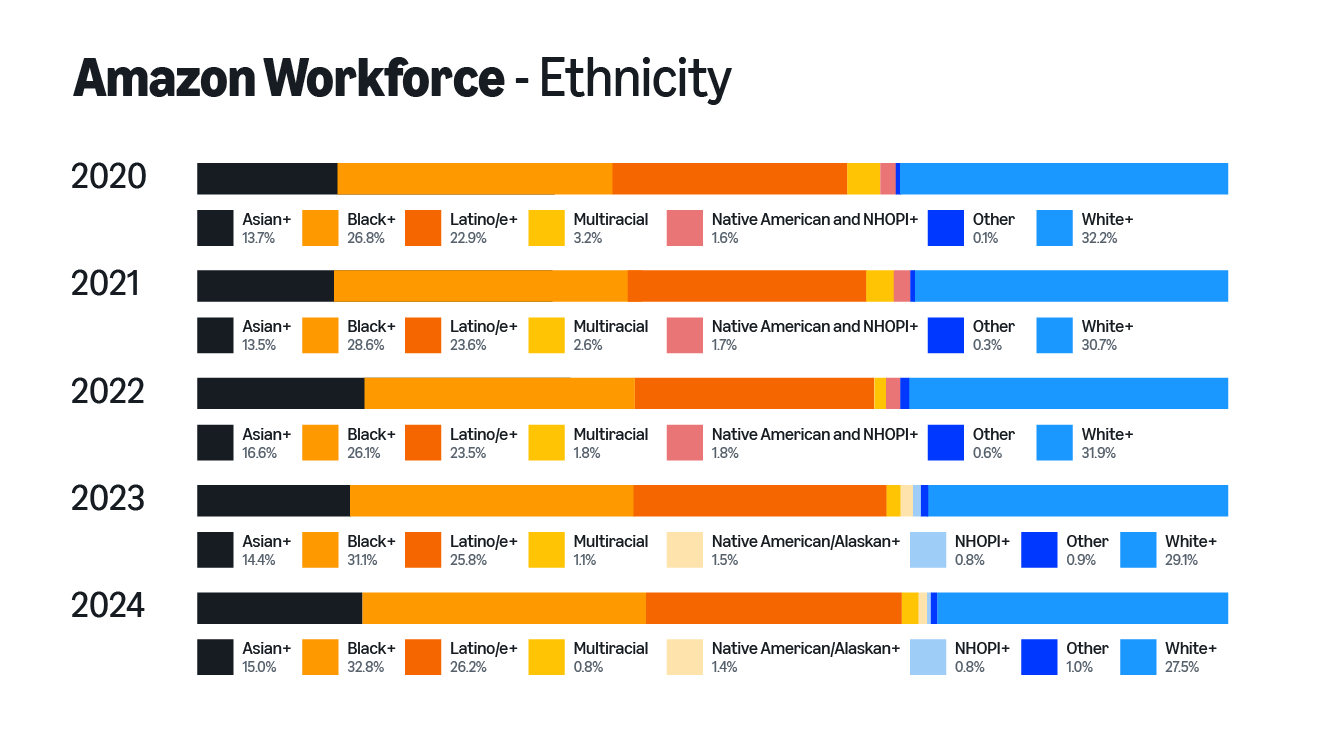
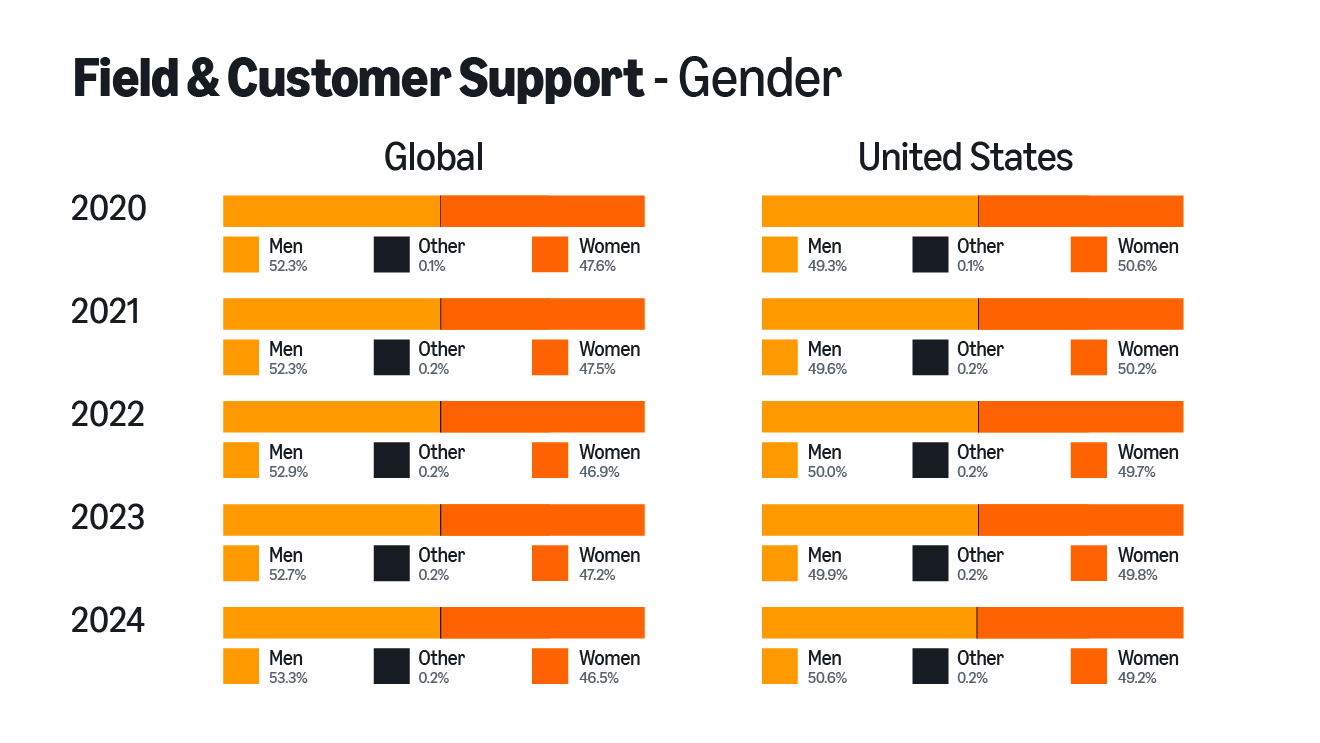
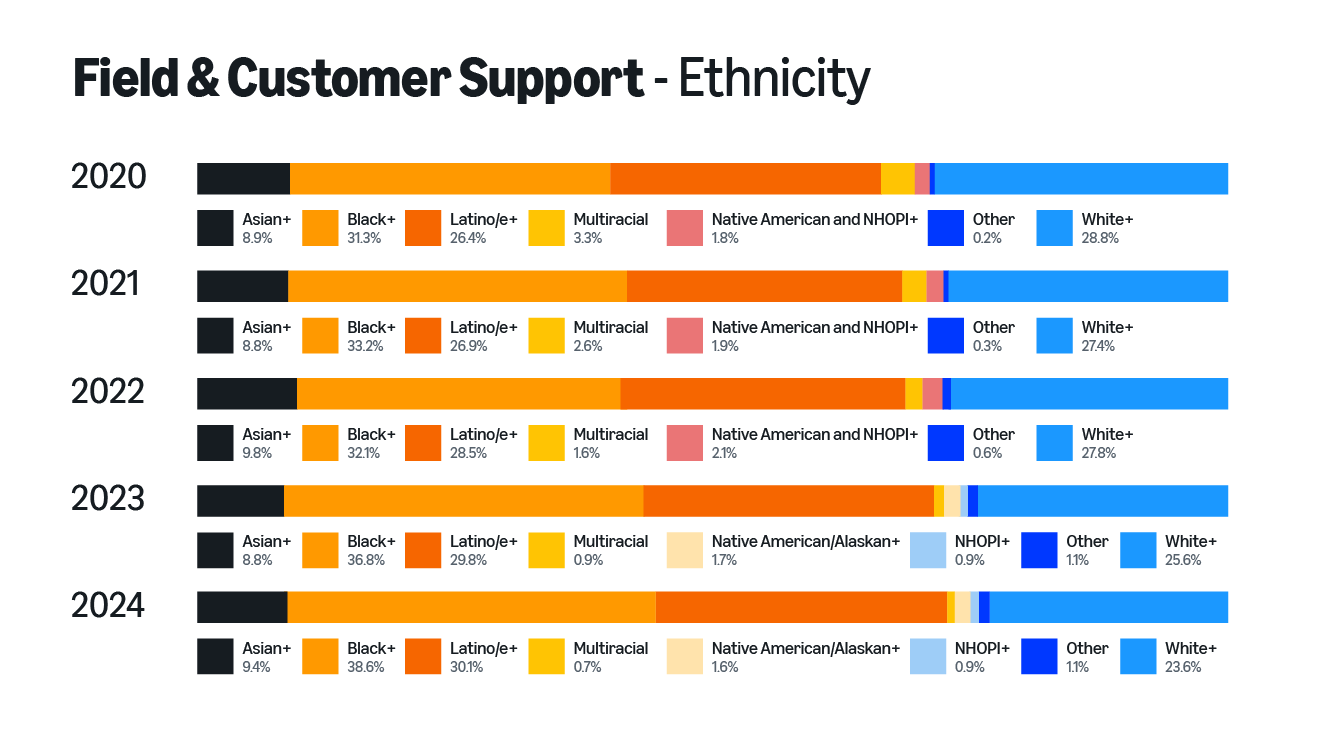
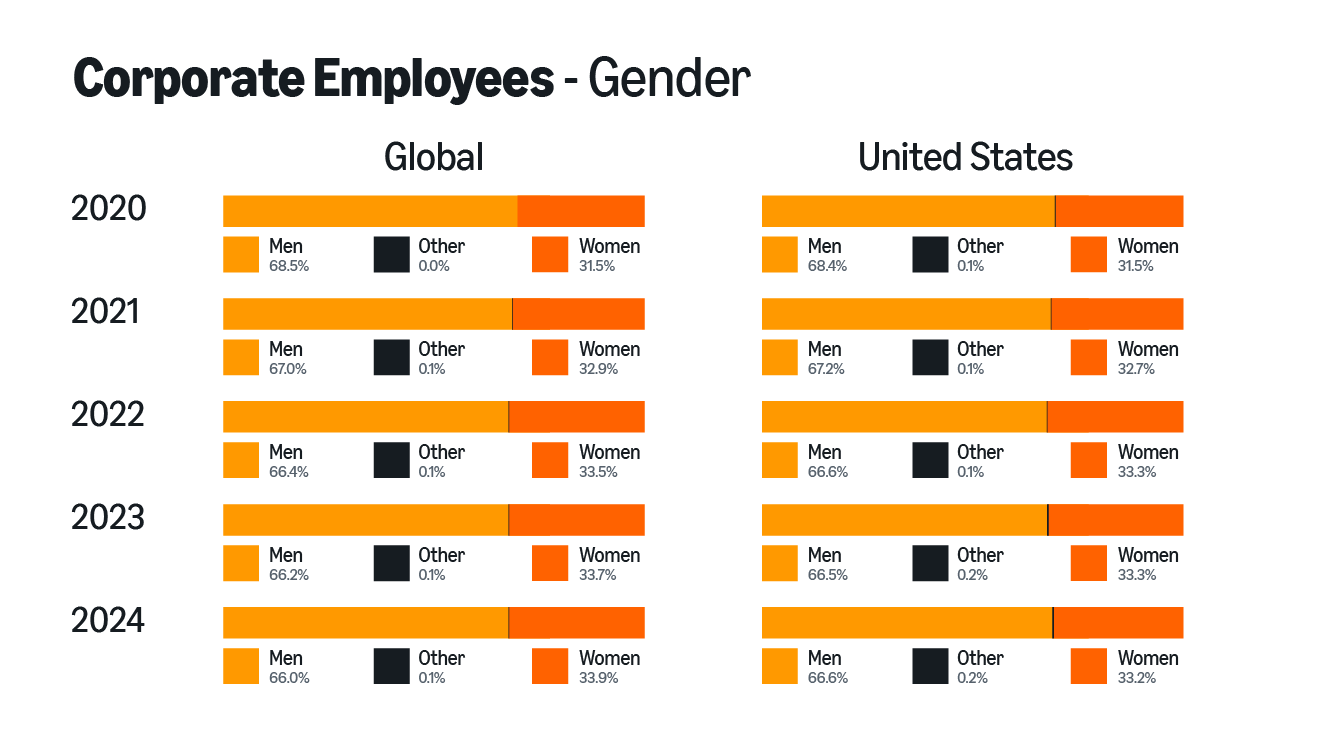
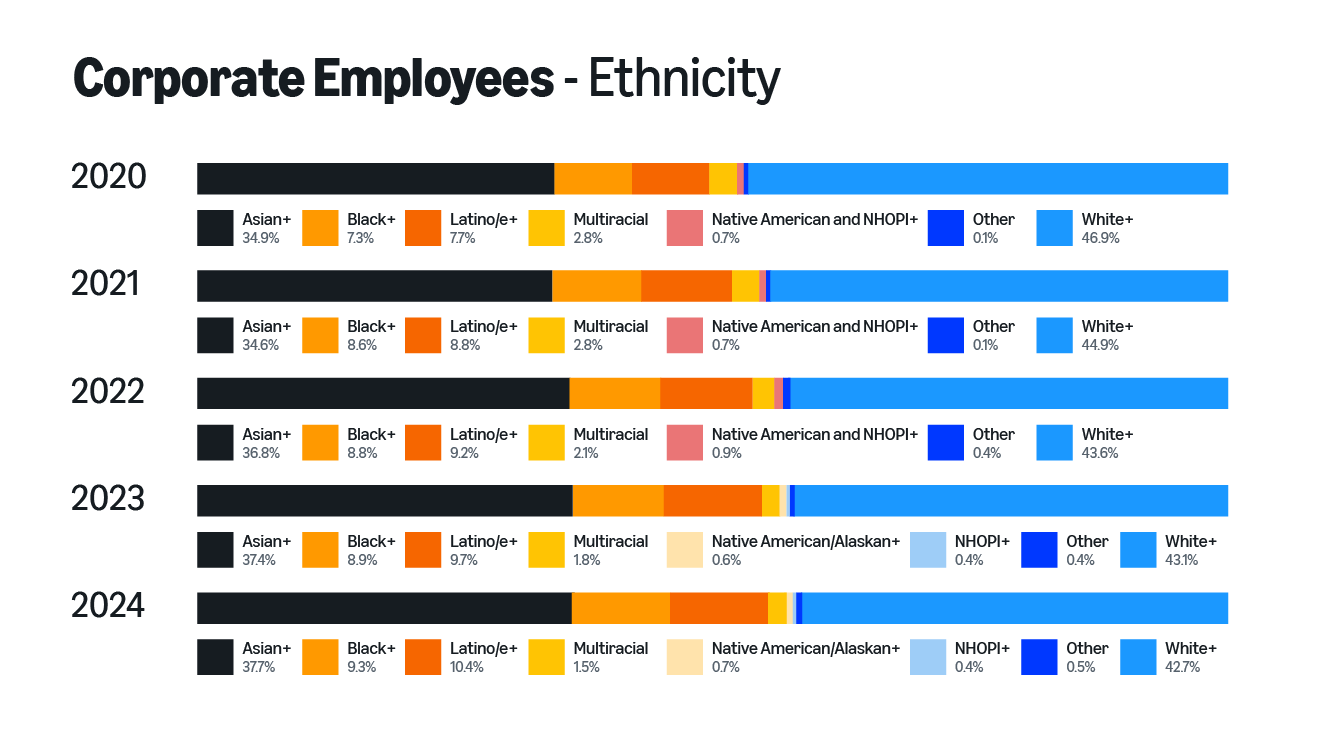
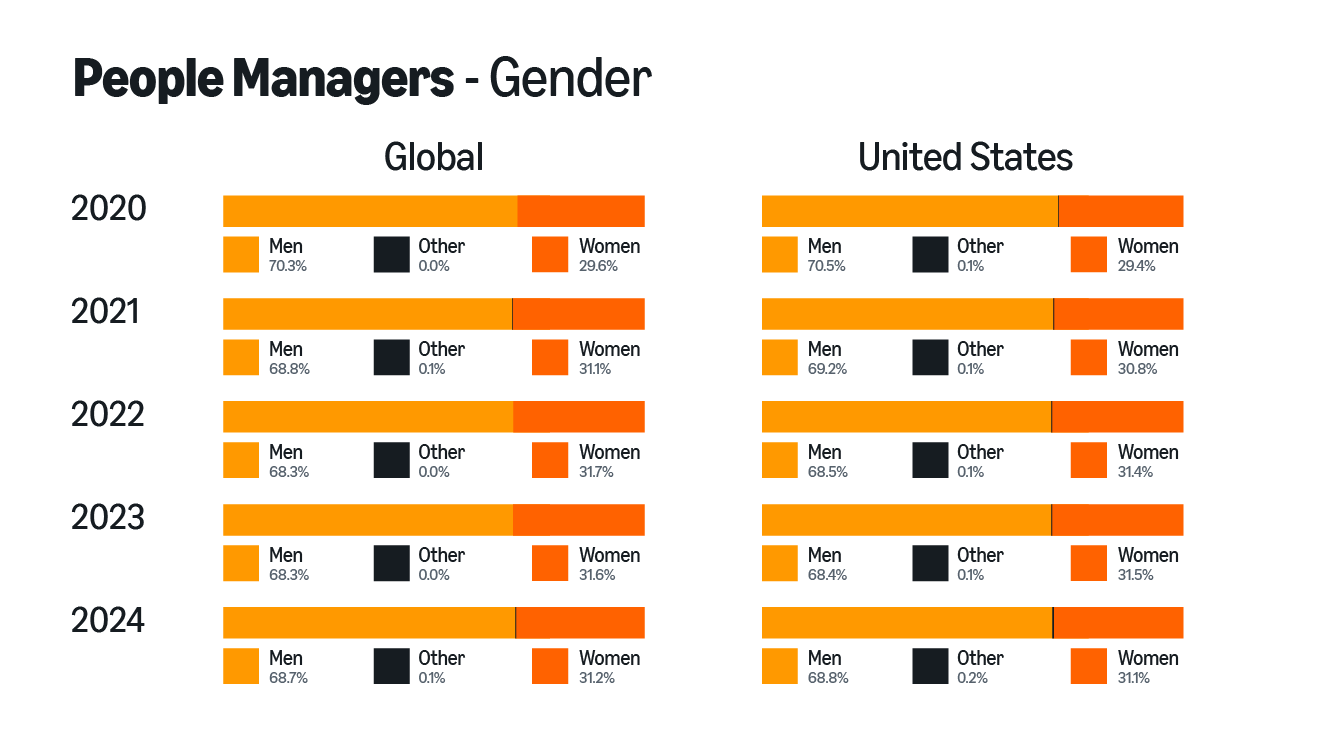
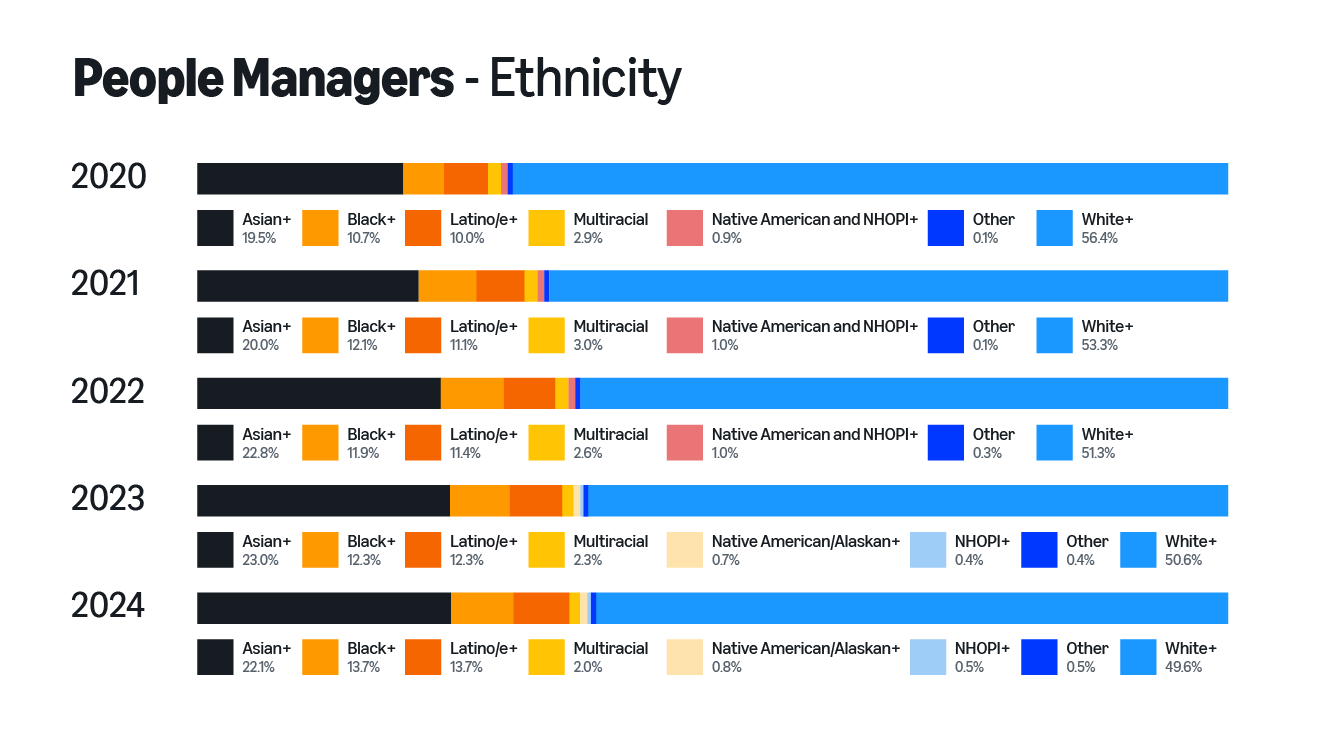
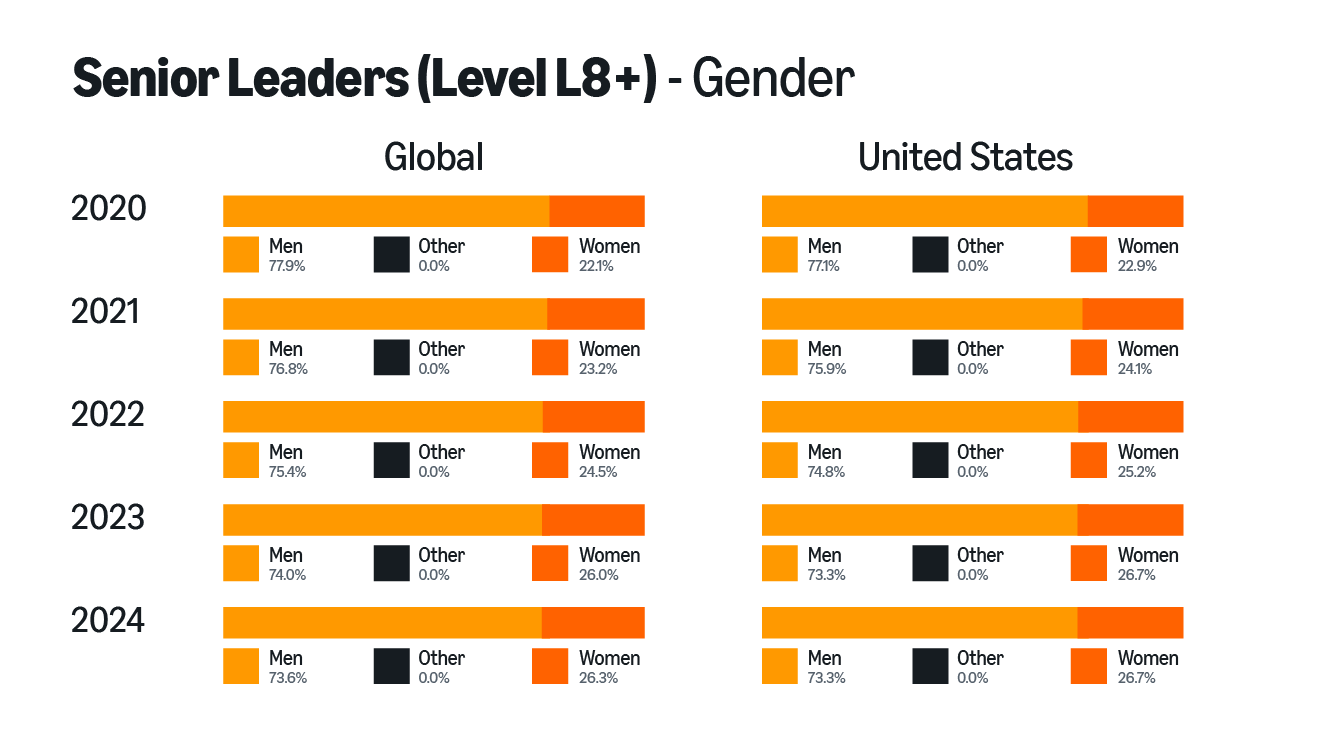
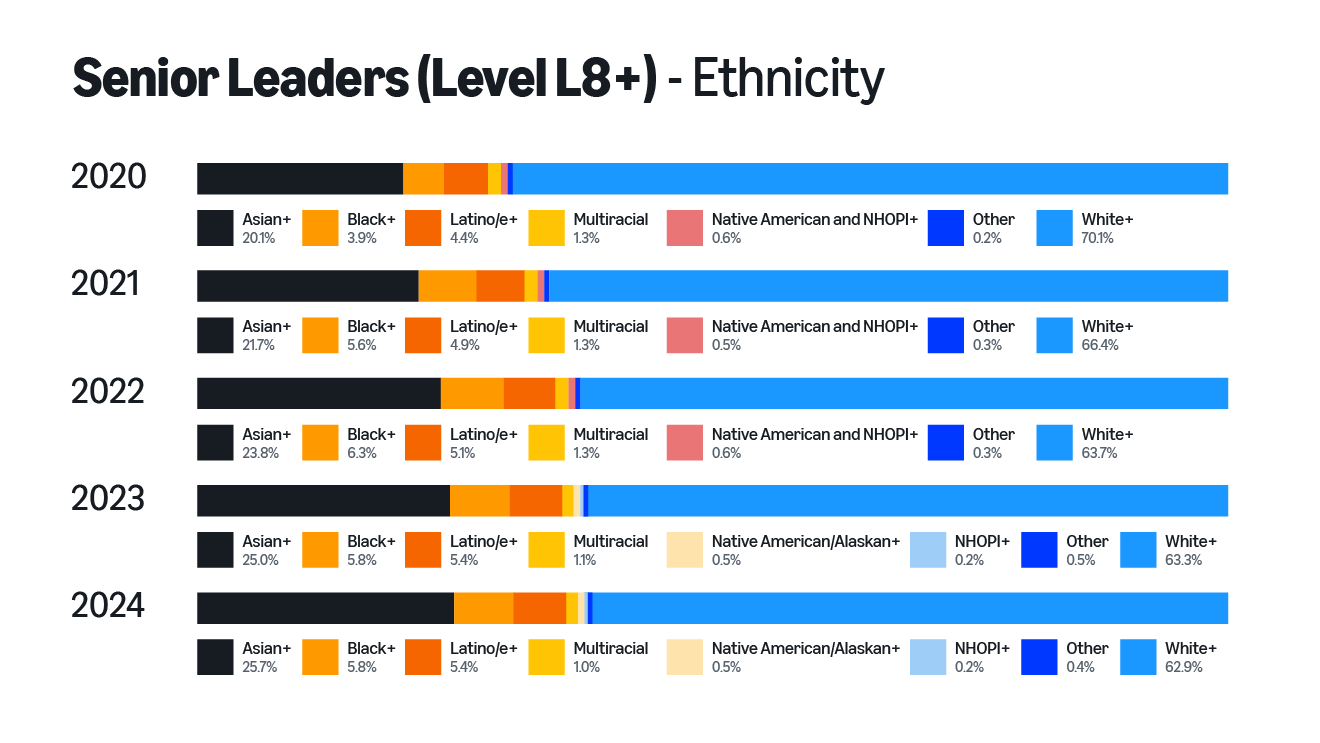
Methodology: We implemented a new “plus” or “+” methodology last year, which is designed to give our employees more choices to self-select one or more categories. This Self-ID process allows Amazon to gather more inclusive global data on demographics and other identities to help give us a more detailed picture of our workforce.
At Amazon, we are a company of builders who bring varying backgrounds, ideas, and points of view to inventing on behalf of our customers.
A review of 2024 compensation, including base pay, cash bonuses, and stock, shows women in the U.S. earned 99.9 cents and women globally earned 99.9 cents for every dollar men earned performing comparable jobs. The review also shows that racial/ethnic minorities in the U.S. earned 99.4 cents for every dollar white employees earned performing comparable jobs.
Note: Employees included in this data are those for whom gender, race, or ethnicity has been identified. Reporting includes directly employed seasonal and temporary Field and Customer Support workers as well as all employees in the Audible, Twitch, and MGM subsidiaries.
Amazon's EEO-1 consolidated reports:
Trending news and stories








